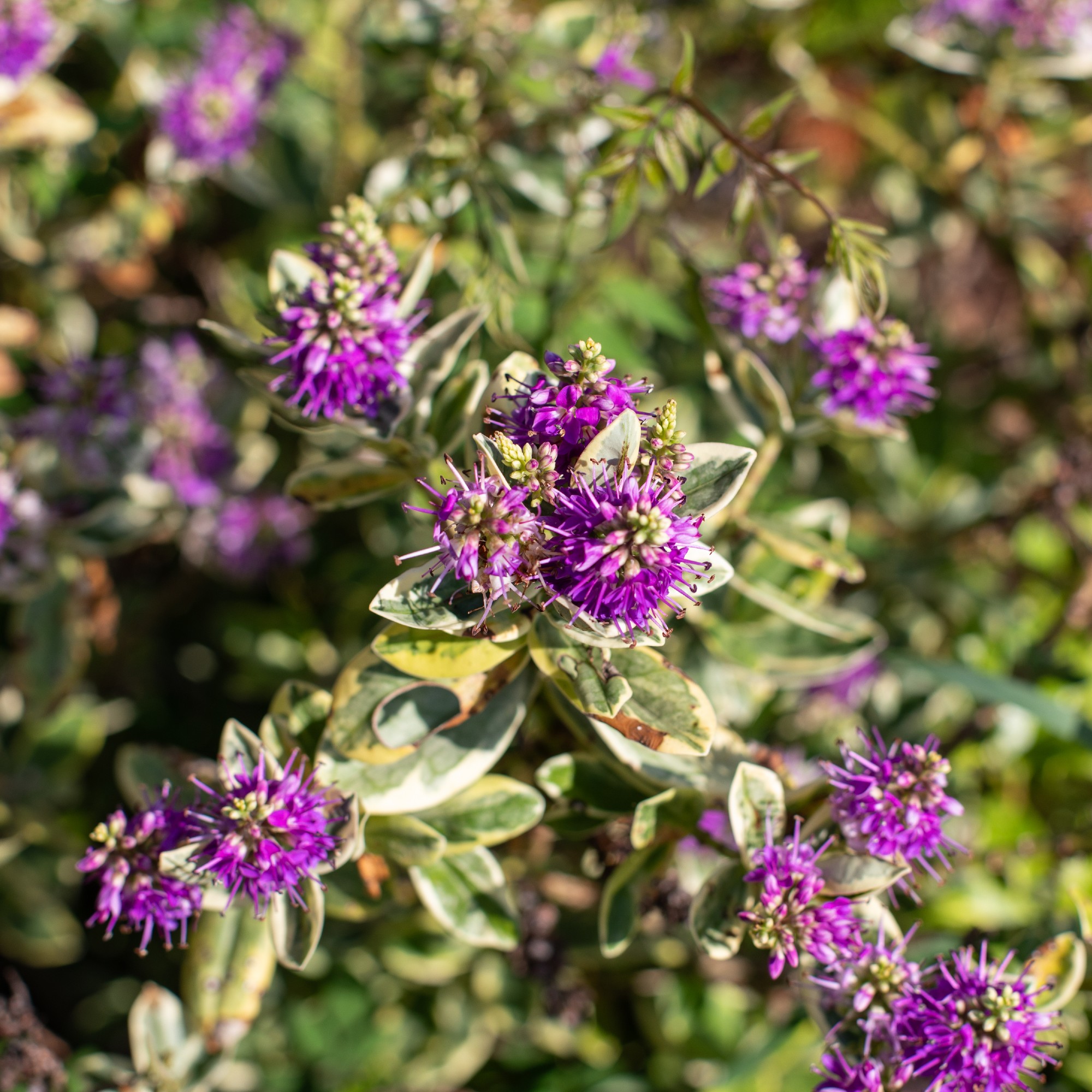When to cut back evergreen shrubs – garden experts say this is when you should be trimming them
Here's how to get your timings right


When it comes to pruning, timing is everything. Knowing when to cut back evergreen shrubs will encourage healthy growth instead of damaging your plants.
There are plenty of low-growing evergreen shrubs to choose from if you want to add colour and interest to borders all year round. Or, you might opt for a more structured evergreen shrub like box or bay.
'An evergreen shrub offers a display of foliage all year round and can fill an empty gap within any garden space,' says Martin Rawlings, project manager at Thomson Environmental Consultants. 'They are also very low maintenance if the right shrub is chosen for the right place. These will only need cutting back if they outgrow their space, have suffered damage or are starting to show signs of disease.'
Knowing when to cut back shrubs is one thing, but we've asked garden experts exactly when to cut back evergreen shrubs to help you get your timings right.
What you'll need

When to cut back evergreen shrubs
Evergreen shrubs are popular plants that increase property value thanks to their ability to stick around year after year. Plus, they're really easy to look after.
'Depending on their establishment or stage of growth, most evergreen shrubs need little to no maintenance,' says Martin from Thomson Environmental Consultants.
But what about the evergreen shrubs you should cut back? It largely depends on the type, but experts agree that it's best to do it ahead of the growing season. 'If pruning is required, it is normally carried out in the spring before the growing season,' explains Martin. This applies to most evergreen shrubs – particularly late-flowering varieties like Hebe, which only require a light trim.
Sign up to our newsletter for style inspiration, real homes, project and garden advice and shopping know-how

As project manager, Martin manages several large ecological mitigation and habitat creation projects at Thomson Environmental Consultants and has practical experience in the considerations around plant removal and management across the UK.

Why wait until spring? Well, pruning early in the growing season will help protect the plant's health.
'Cutting back branches as the weather is warming up makes the plant less prone to frost and winter damage and allows for new buds to grow before the high temperatures of the summer months,' says Gareth Mitchell, founder of Tree2MyDoor.
'While dead, diseased or broken foliage should be cut back at the earliest opportunity to avoid any further damage to the plant, a general pruning should be carried out in spring.'
Early-flowering evergreen shrubs like camellias and rhododendrons usually require very little pruning – deadheading alone can keep them in good shape. If you want to shape them, though, you should wait until the shrubs have finished flowering before pruning back the shoots.

With a background in the environmental and charity sectors, Gareth grew up in Northern Ireland where he learnt about the many different species of local plant life, developing a strong desire for the conservation of the natural environment at an early age. He founded Tree2MyDoor in 2003 in a bid to supply greener products to consumers, and the business is now one of the UK’s leading sustainable gift brands.

How to cut back evergreen shrubs
Now that we've established when to cut back evergreen shrubs, we need to figure out the best way to prune them. Luckily, learning how to cut back evergreen shrubs is pretty simple.
'Remove any dead, dying or diseased wood, old wood, and unwanted growth,' says Martin from Thomson Environmental Consultants. 'It is also good practice to remove congested stems or branches to improve plant hygiene and balance out the plant.'
Thinning out the stems will enable more sunlight to reach the middle of the plant. When making cuts, best practice is to trim back to healthy outward-facing buds.
But first, you'll need to make sure you have the right equipment. 'Standard, well-sharpened secateurs should suffice when dealing with smaller shrubs needing a quick tidy up,' says Gareth from Tree2MyDoor. 'However, if you’re dealing with larger, more overgrown hedges, you may want to invest in a good quality hedge trimmer.' If you're learning how to trim a box hedge and other formal shrubs, a lightweight hedge trimmer like the Ryobi OHT1845 18V ONE+ Cordless Hedge Trimmer from Amazon will come in handy.
As always, make sure you're cleaning your garden tools properly to prevent the spread of diseases between plants.

Don't forget about aftercare, though – plants benefit from a little TLC after pruning.
'After being cut back, the shrub will benefit from mulching and feeding,' says Graham Smith MCIhort horticultural expert at LBS Horticulture. 'Ideally, use a general-purpose fertiliser or one that is high in potassium.'
FAQs
What happens if you prune a shrub in summer?
Though it can be tempting to get a headstart on pruning, cutting evergreen shrubs right back in the summer can be problematic.
'By pruning in summer, you are effectively removing the plant’s food resources in the leaves which would take them through the winter months, which can result in stunted growth,' says Gareth from Tree2MyDoor. 'Pruning encourages further growth, but timing is everything – if you do this in summer, the shoots will begin to form in high temperatures so they won’t flourish. Always restrict summer pruning to tackling the dead and deteriorating branches only.'
What is the best month to trim evergreen trees?
'There’s not a one-size-fits-all approach as there is such a broad spectrum of evergreen trees,' says Gareth. 'As a general rule, pruning in springtime will allow cuts to heal quickly and new buds to develop. For flowering evergreen trees such as olive trees, prune right after they bloom for best results the following year. If it’s left too late, your evergreen tree is susceptible to damage and stunted growth over the colder winter months.'
You should also be mindful of wildlife. 'As best practice, works on any trees, including evergreens, should be carried out during their dormant period,' says Martin from Thomson Environmental Consultants. 'This is normally over the winter and into early spring and the timing is especially prudent to avoid any disturbance of nesting birds.'
So, while rules vary between species when working out when to cut back evergreen shrubs, waiting until the spring is your safest bet for any hard pruning.

Sophie joined the Ideal Home team as Gardens Editor in June 2024. After studying English at Royal Holloway, University of London, she began writing for Grow Your Own, which spurred on her love of gardening. She's tried growing almost every vegetable under the sun, and has a soft spot for roses and dinnerplate dahlias.
As Gardens Editor, Sophie's always on the lookout for the latest garden trend. She loves sharing growing hacks for every space, from herbaceous borders to balconies.

